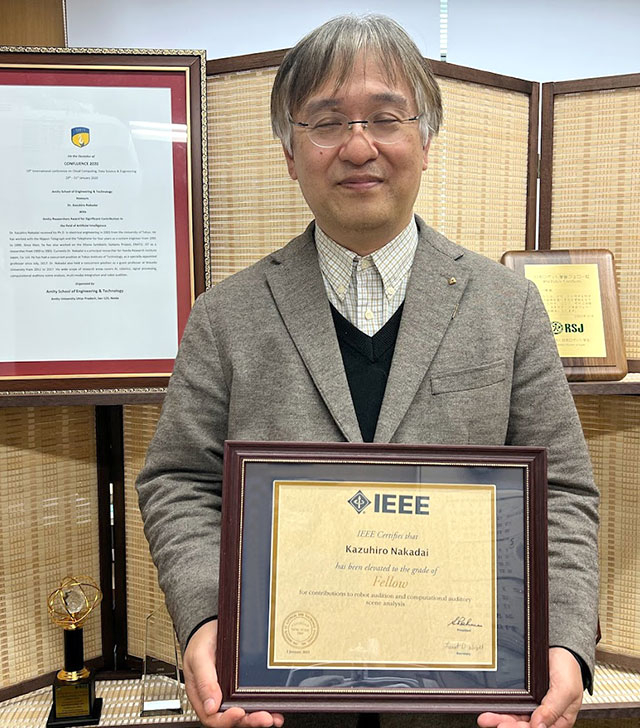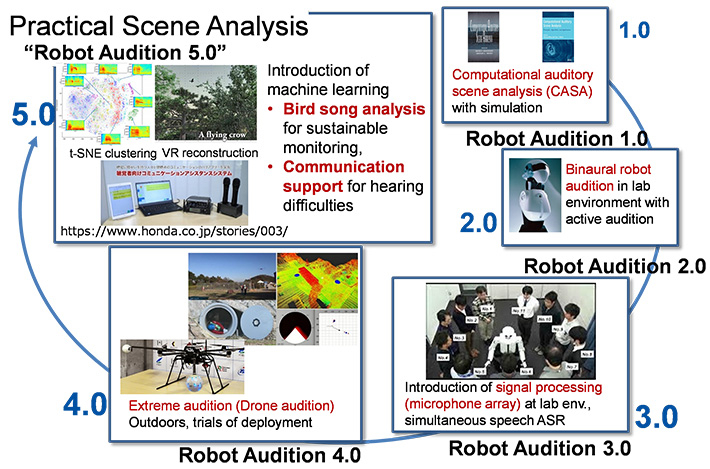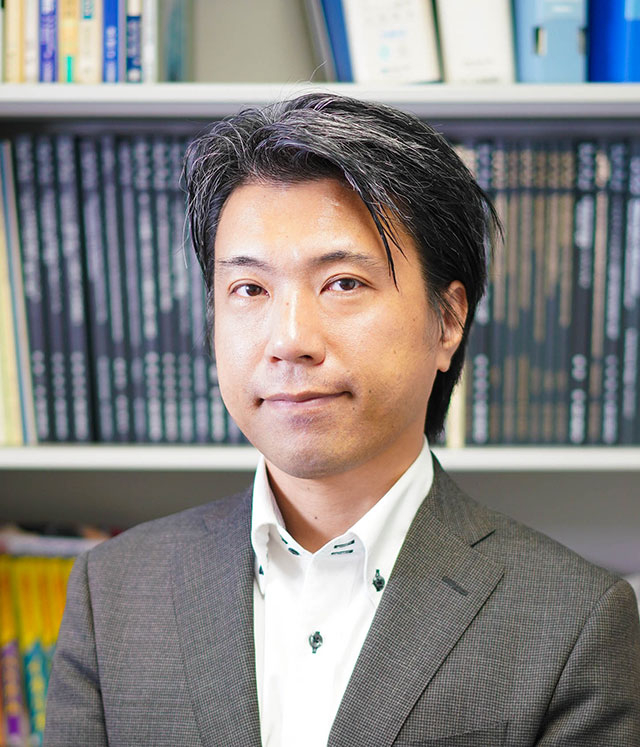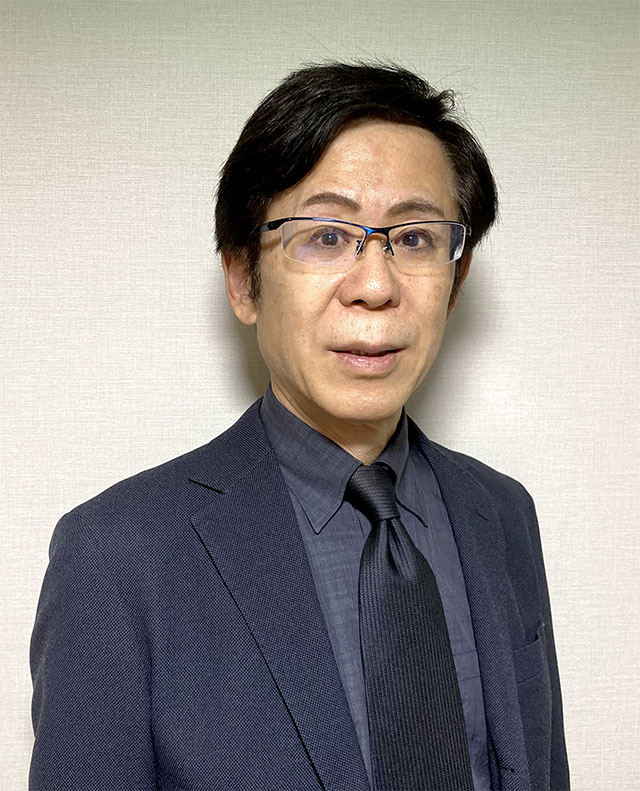I am honored to receive the title of Fellow from the IEEE. This is an international recognition of the series of research efforts and results, including proposals for research fields, research and development of technologies, and real-world implementation and deployment efforts of the robot audition research that I have been engaged in for many years.
Robot audition is a research area that I proposed with Prof. Hiroshi G. Okuno (Professor Emeritus, Kyoto University, now at Waseda University) under the slogan "Creating 'robot ear' functionality" in 2000, as a research topic originating in Japan. Since a robot's ears receive a mixture of various sounds, the ability to distinguish between sounds is essential. To achieve this functionality, we have continued to lead the world in research, focusing on binaural processing that mimics humans and other living organisms, microphone array processing using multiple microphones, and machine learning-based processing as exemplified by deep learning.
In 2008, HARK (Honda Research Institute Japan Audition for Robots with Kyoto University), an open-source software package of robot audition technology, was released to the public and has remained available to this day, with annual updates and hands-on tutorials for the public. Currently, HARK is being used as a starting point for other developments such as search-and-rescue robots, bird song analysis technology, and communication support systems for the hearing difficulties. The term Robot Audition was also recognized by the IEEE Robotic and Automation Society in 2014 as an official keyword to describe the research field.
This achievement would not have been possible without the help of all of you who have provided guidance and support. I would like to take this opportunity to express my deepest gratitude to my former employer, Honda Research Institute Japan, as well as to the professors and students at universities in Japan and abroad who have conducted joint research with us, and to the students and staff at the Nakadai Laboratory, including alumni and former students.
. Any information published on this site will be valid in relation to Science Tokyo.







